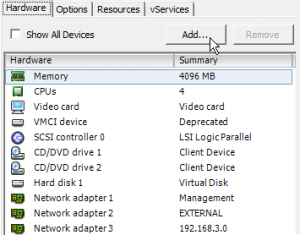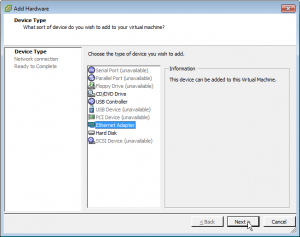My apprehension – a weird nightmare of having to shutdown the router, add the nic and boot the router again – proved wrong.
vNIC Hot-Add is supported for VMware ESXi, Citrix XenServer and KVM
Not for Hyper-V, Azure, AWS today.
Cisco: Virtual Machine Requirements
…up to 10 vNICs for ESXi btw.
- Starting with three default-interfaces
IOS-RTR#show ip int brief Interface IP-Address OK? Method Status Protocol GigabitEthernet1 192.168.2.13 YES NVRAM up up GigabitEthernet2 unassigned YES NVRAM administratively down down GigabitEthernet3 unassigned YES NVRAM administratively down down
- select the VM
- go to „Edit Settings“



- Next, Next, Finish
- be patient
Dec 16 14:56:10.165: %LINK-5-CHANGED: Interface GigabitEthernet4, changed state to administratively down Dec 16 14:56:11.166: %LINEPROTO-5-UPDOWN: Line protocol on Interface GigabitEthernet4, changed state to down
IOS-RTR#show ip int brief Interface IP-Address OK? Method Status Protocol GigabitEthernet1 192.168.2.13 YES NVRAM up up GigabitEthernet2 unassigned YES NVRAM administratively down down GigabitEthernet3 unassigned YES NVRAM administratively down down GigabitEthernet4 unassigned YES unset administratively down down
…Hot-Remove is supported only using a special „two-step“ strategy